Abandoned Dubai: 10 brownfield sites that you are unlikely to see gone in UAE

Dubai - the jewel in the crown of the United Arab Emirates and one of the most expensive cities in the world. This - the birthplace of the tallest building in the world, the biggest and most expensive yacht in the world, two of the most expensive drinks and incredible architecture. All of the prestigious companies open their offices here, luxury supercars dissect the streets of this city, and the cash flow like water.
But abandoned construction projects located within the city and outside it, tell a different story. Hundreds of villas in the city left to rot because nobody bought them or the owners were forced to leave them.
Before the 1966 oil was discovered in the region, Dubai was only a trade artery and thank it for it was to Iraq and a unique harbor, which could take the huge cargo ships. In the late 1970s, the city infrastructure has received a great development thanks to the efforts of the governor at the time of Sheikh Rashid bin Saeed Al Maktoum, who built a beautiful paved runway. He knew exactly what is needed to lead to the success of Dubai, and his efforts paid off when petrodollars flowed the river. Over the next 10 years, the city has increased the number of residents in Dubai by 300%.
In fact, it is the foundation on which is built and modern Dubai. And what now? Cash flow is still passing through the city, but a luxurious facade gave many cracks. In some places, expensive cladding crumbled and today we can see the real Dubai, soulless and thrown on the mercy of the sands.
Jebel Ali Village (Jebel Ali Village).
In 1977 he appeared outside the Dubai Jebel Ali Village, LUXURY suburb, which was to become the home of the former expatriates who wish to return home. construction was provided about 300 villas, hospitals, pond, park and club. But because of poor location, until the 1980 Jebel Ali Village is experiencing an acute shortage of grocery stores, so residents were forced to travel to Dubai for food and other essential commodities. Jebel Ali Village was closed in 2008, and the sheiks gave promise that the area will be reconstructed. But in 2011 the area of Jebel Ali Village is completely empty. Rumor has it that the Jebel Ali is recovering, but time will tell whether it will end someday.
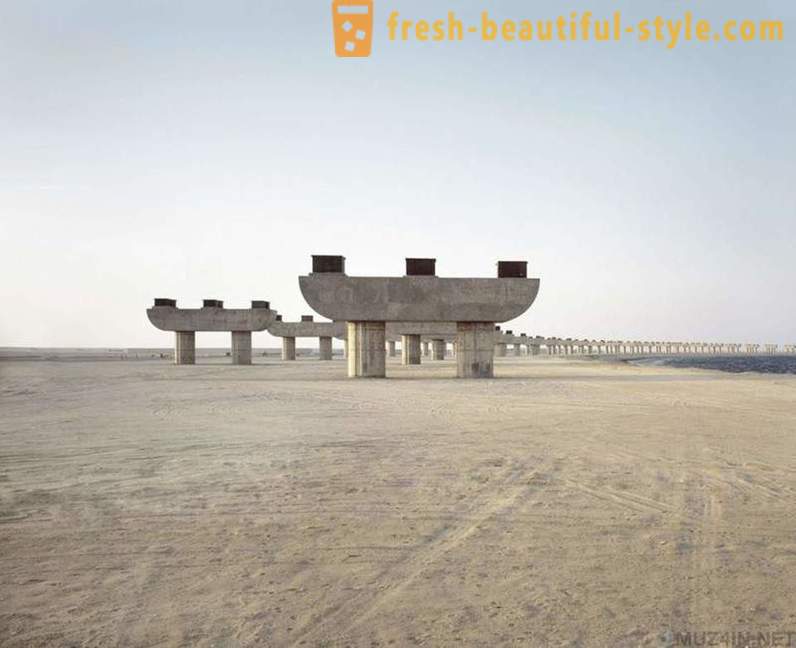
Palm Jebel Ali (Palm Jebel Ali).
Some time after the completion of the Palm Jebel Ali artificial island in 2001, it was announced that the construction of other artificial islands, on which work has not ended. Palm Jebel Ali was named in honor of the village with the same name and was to be completed in 2008. The economic downturn has led to the freezing of the project, due to which the island began to slowly break down, and a number of huge pillars, which had become a flyover of the island, today showered in the salty sea water. The company Nakheel, the developer of this project, in 2011 began producing the payment of compensation to investors, alluding to the fact that the island will never be fully completed.
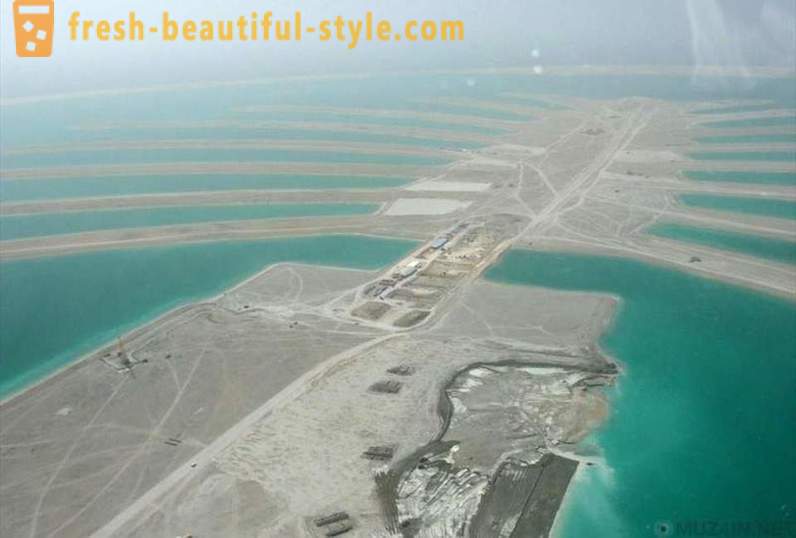
Al Jazeera Al Hamra.
City of Al Jazeera Al Hamra about 700 years, but today it is a relic of the past. Most of the city is in ruins, but on the background of sand you can still see examples of traditional Arab architecture. There is another reason that makes people come here. It is said that the city inhabited by ghosts, in which you can really believe, given how much time people lived in the area. Members of the tribe of Al-ZAAB lived here until the discovery of oil, and were forced to move to Abu Dhabi due to some disagreements that have arisen with the then ruler of the neighboring Ras al-Khaimah.
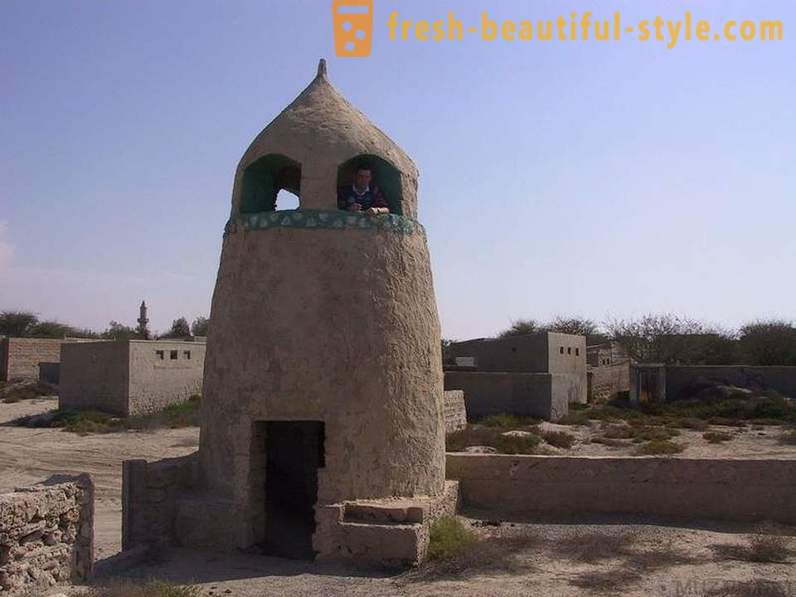
to
House number 33 in Al Kheyl Gate (Al Khail Gate).
In 2011, people living in this building in Al Kheyl Gheit, left the place, and after six months the management company has closed its doors. In the building, there were several suicides, and the people who left him, reported strange cases that caused them to leave their homes. As of the 2013 house number 33 was still deserted, but within the repairs were carried out. After that, no news of the house was not, so the fate of the building is not exactly known.

How to solve the construction problem of Dubai.
Dubai news sites often report about the threat of demolition of abandoned buildings. When they call it the figure of 250 buildings that may soon go under demolition. Abandoned buildings - the main problem in Dubai as people are unable to use their investments or simply do not want to use what is bought. Unlike other cities, Dubai has the legal right to demolish almost any vacant building.
When the building remains abandoned for six months, city officials are starting to act and send a formal request to begin reconstruction. If the owner is not announced and the building continues to be empty, it starts a procedure that allows the city to legally equalize the house to the ground.
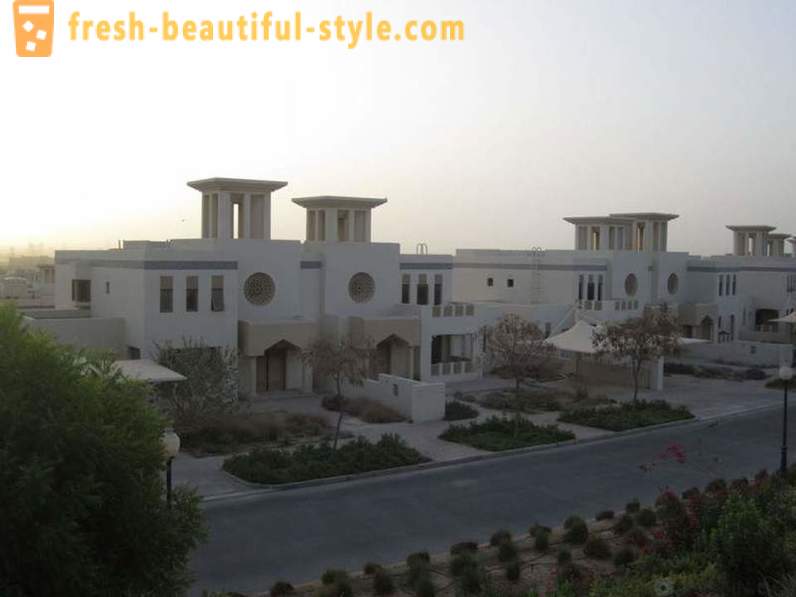
Arabian Canal.
In Dubai, there is an artificial lake, which, according to the original plan, was supposed to be a big project. According to the plan, 75-kilometer Arabian Canal had to skirt the Al Maktoum International Airport and to return to the Palm Jebel Ali. Unfortunately, the project was suspended in 2009 and has since been able to freeze. He was supposed to cost $ 11 billion. At this point, the lake is used as an oasis for local wildlife.
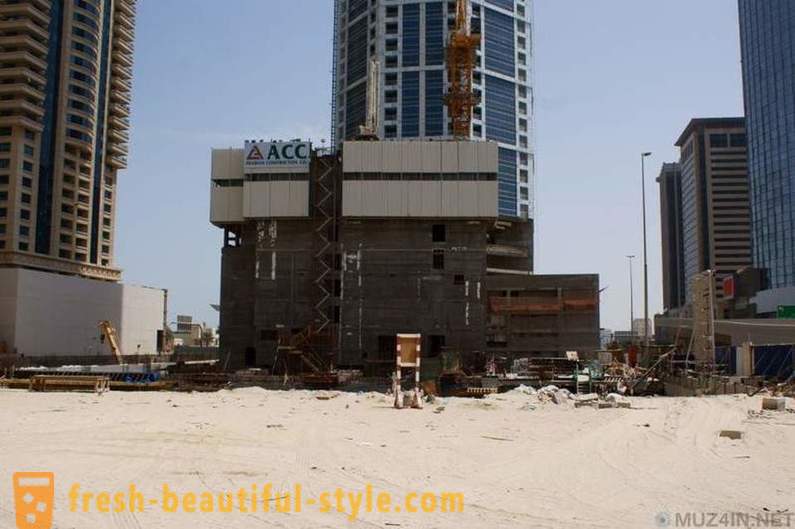
pentominium.
Dubai just loves skyscrapers and pentominium was supposed to be one of them. Pentominium if it was completed, it would become the tallest residential building in the world and the second tallest skyscraper in Dubai. Construction began in 2009 and by 2011 already 22 floors were built, when suddenly the building was dramatically stopped. Why? The construction company is mired in huge debts and, therefore, for five years at the construction site without any changes.
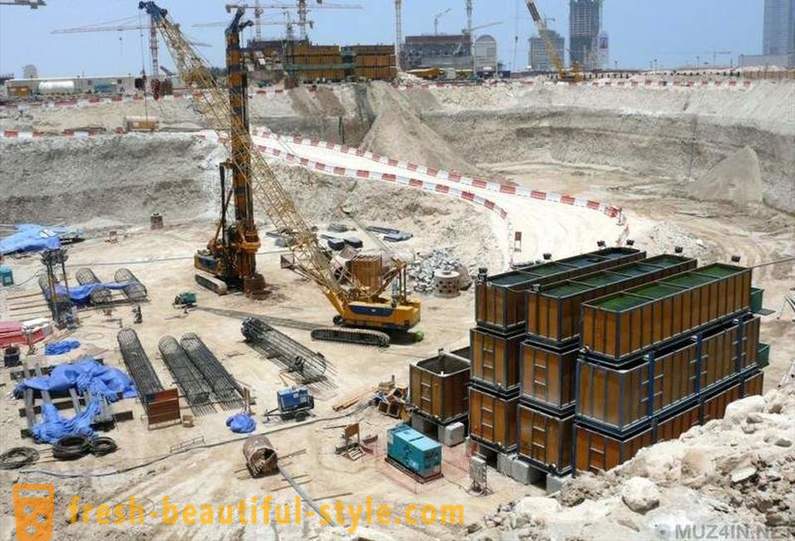
Burj Al Alam.
Complex in Business Bay in Dubai, including a 108-storey skyscraper, which is planned to finish in 2009. Its construction began in 2006, but repeated delays in the payment of construction materials and wages put the cross tower. All you had to do the builders, so it is to drive piles. This project has become another victim of the financial crisis, and was officially mothballed in 2013. What was to become one of the tallest buildings in the world, now it looks like a deserted wasteland.
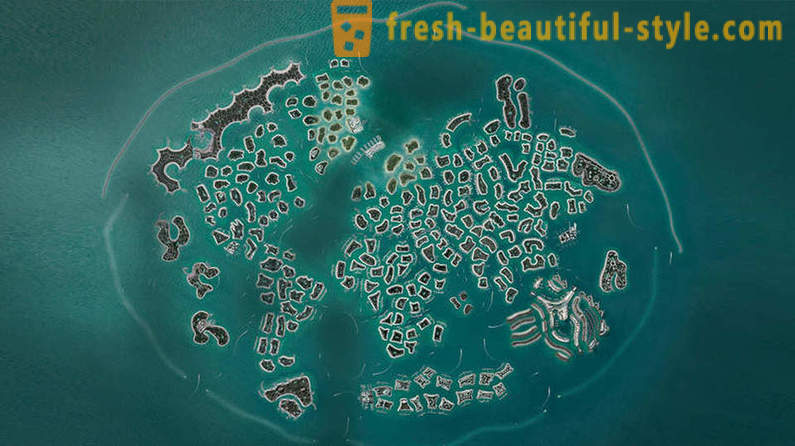
World Island.
Known as Juzur al-Alam, the finished, but abandoned the archipelago of islands that was supposed to be part of a collection of artificial islands in Dubai. By design, the island copies the entire world map. By the way, this is another project of the company Nakheel. Construction was halted in 2008 after 5 years of work, in the midst of the financial crisis, the company did not care that 60 per cent of the islands have already been purchased, and on the two islands have already been built home.
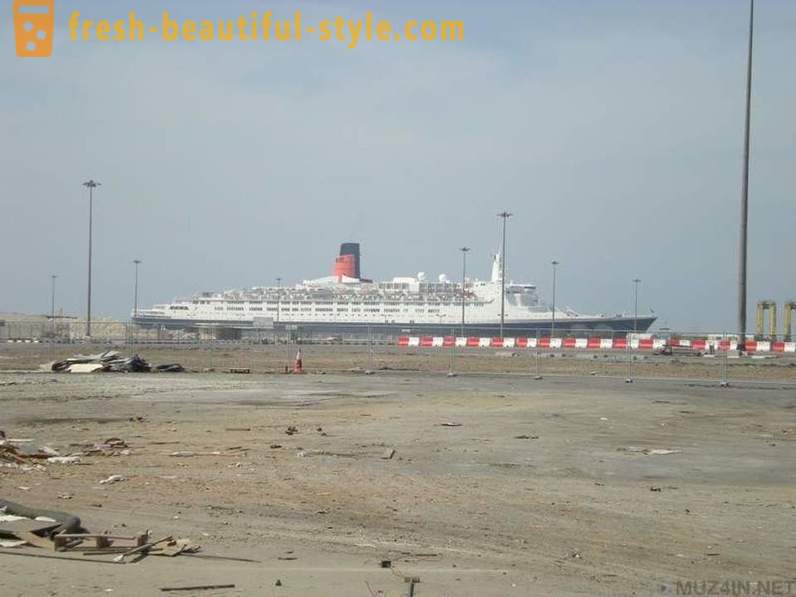
The ocean liner "Queen Elizabeth II" (RMS Queen Elizabeth 2).
which was put on the water in 1967. The ship was the flagship of the Cunard Line for over 40 years until retirement, when in 2008 it was bought by Dubai World, which planned to turn the ship into a floating hotel. But few of us know that the old vessel content is associated with a permanent solution truly unique problems that have never arisen if in normal building. If you think that you've heard about the Cunard Line, it is because it merged with White Star Line, the company that once owned, "Titanic." Anyway, it ended up that Queen Elizabeth II remains moored at Port Rashid since then, as it was bought in 2013. Ship collided with the problem of ubiquitous mold and everything that was inside, gradually began to deteriorate. The liner began to crumble before our eyes. Worried fans make all possible efforts to save the ship, but they are so far from the goal, which is likely to ship soon will go to the dump, if you simply rot.













































